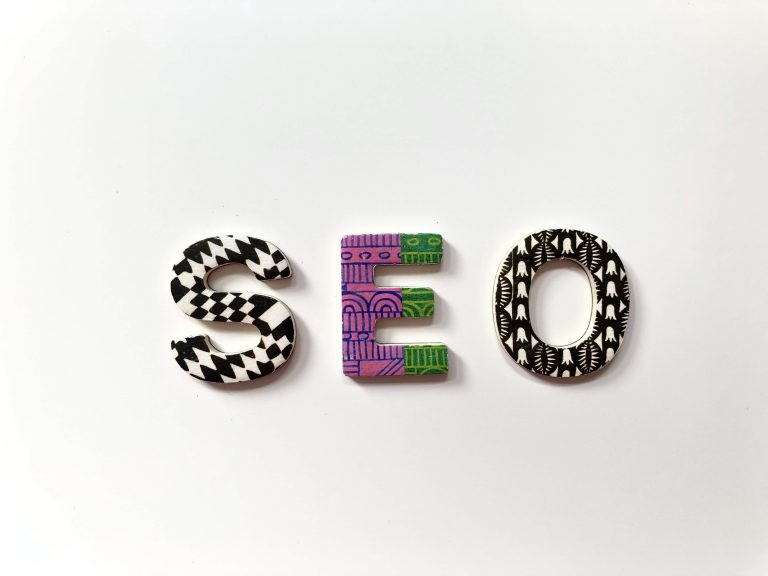The Ultimate SEO Glossary: Mastering Search Engine Optimization Terminology
Introduction
In the dynamic world of search engine optimization (SEO), understanding the terminology is crucial for effective communication and successful implementation of strategies. The language of SEO can seem daunting, with its unique set of acronyms, jargon, and concepts. However, by mastering this vocabulary, you can elevate your SEO game and stay ahead of the competition.
This comprehensive glossary aims to demystify the world of SEO terminology. Whether you are a seasoned professional or a beginner embarking on your SEO journey, this resource will serve as your go-to reference, empowering you to navigate the ever-evolving landscape with confidence.
Table of Contents
- The Fundamentals
- On-Page Optimization
- Off-Page Optimization
- Technical SEO
- Local SEO
- Analytics and Measurement
- SEO Strategies and Techniques
- Search Engine Algorithms and Updates
The Fundamentals
Before diving into the intricacies of SEO terminology, let’s start with the foundational concepts:
- Search Engine: A software program designed to search for and retrieve information from the internet based on user queries.
- Search Engine Results Page (SERP): The page that displays the results of a user’s search query, including organic listings, paid advertisements, and other features like featured snippets or knowledge panels.
- Organic Search: The unpaid, natural search results that appear on SERPs based on the relevance and authority of the content.
- E-A-T: E-A-T stands for expertise, authoritativeness, and trustworthiness. It’s an SEO strategy that focuses on content optimization and reputation management.
- Crawler (Spider or Bot): Software programs used by search engines to discover and index web pages by following hyperlinks and retrieving information.
- Indexing: The process of adding web pages to a search engine’s database, making them accessible for retrieval and ranking.
- Ranking: The position at which a web page appears in the search engine results for a particular query, determined by the search engine’s algorithm.
- Search Engine Marketing (SEM): The practice of promoting websites and increasing their visibility on search engine results pages (SERPs) through both paid and organic strategies.
- Search Engine Optimization (SEO): The practice of optimizing websites and their content to rank higher in search engine results and drive more organic traffic. See Differences between SEM vs SEO.
- Algorithm: A complex set of rules and calculations used by search engines to determine the relevance and ranking of web pages for specific queries.
On-Page Optimization
On-page optimization refers to the strategies and techniques applied directly to a website’s pages to improve their visibility and ranking in search engines. Here are some crucial on-page SEO terms:
- Title Tag: An HTML element that specifies the title of a web page, which appears in the browser tab and search engine results.
- Meta Description: A concise summary of a web page’s content, typically displayed in the search results below the page title.
- Header Tags (H1, H2, H3, etc.): HTML elements used to structure content and establish a hierarchy of headings and subheadings.
- Keyword Density: The ratio of times a specific keyword appears on a web page compared to the total word count.
- Content Optimization: The process of creating and optimizing web content to target specific keywords and fulfill user intent.
- Image Optimization: The practice of optimizing images for better user experience and search engine visibility by compressing file sizes, using descriptive file names, and including relevant alt text.
- Internal Linking: The process of linking between pages within the same website, helping search engines understand the site’s structure and distributing link equity.
- Anchor Text: The clickable text portion of a hyperlink that provides context about the destination page.
- User Experience (UX): The overall experience a user has when interacting with a website, including factors like design, navigation, and usability.
- Core Web Vitals: A set of metrics introduced by Google to measure the user experience of web pages, including loading performance, interactivity, and visual stability.
Off-Page Optimization
Off-page optimization encompasses strategies and techniques that occur outside of a website to improve its visibility and authority in search engines. Here are some key terms:
- Link Building: The process of acquiring high-quality backlinks from other reputable websites, which can improve a site’s authority and rankings.
- Backlink (Inbound Link): A hyperlink from one website to another, which can pass link equity and authority.
- Link Equity: The value and authority that a backlink passes to the linked page or website.
- Nofollow Link: A type of link with the
rel="nofollow"attribute, which instructs search engines not to pass link equity or authority to the linked page. - Anchor Text Distribution: The balance and variety of anchor text used in backlinks pointing to a website, which can impact rankings.
- Link Velocity: The rate at which a website acquires new backlinks over time, which can be a potential ranking factor.
- Link Spam: The practice of using manipulative or deceptive tactics to acquire backlinks, which violates search engine guidelines and can result in penalties.
- Social Signals: The engagement and shares a piece of content receives on social media platforms, which can influence search engine rankings.
- Brand Mentions: References to a brand or company name on the web, even without a direct link, which can contribute to brand awareness and authority.
- Influencer Marketing: The practice of collaborating with influential individuals or brands to promote products, services, or content to their audience.
Technical SEO
Technical SEO focuses on optimizing the underlying technical aspects of a website to improve its crawlability, indexability, and overall performance. Here are some essential technical SEO terms:
- Crawlability: The ease with which search engine crawlers can access and navigate a website’s pages and content.
- Indexability: The ability of search engines to understand and index a website’s content for inclusion in search results.
- Robots.txt File: A text file that provides instructions to search engine crawlers on which pages or directories should be crawled or excluded from indexing.
- Canonicalization: The process of specifying the preferred version of a URL when multiple URLs point to the same content, to avoid duplicate content issues.
- Sitemaps: Files that provide search engines with a structured list of all the pages on a website, helping with crawling and indexing.
- Structured Data: A standardized format for providing information about a page’s content, which can enhance search engine understanding and result in rich snippets or knowledge panels.
- Page Speed: The measurement of how quickly a web page loads, which can impact user experience and search engine rankings.
- Mobile-Friendliness: The degree to which a website is optimized for mobile devices, ensuring a seamless user experience and meeting search engine requirements.
- Pagination: The practice of dividing lengthy content into multiple pages, which requires proper implementation to ensure search engine crawlers can access and index all pages.
- Breadcrumb Navigation: A secondary navigation scheme that shows the user’s location within the website’s hierarchy, providing additional context and improving usability.
Local SEO
Local SEO is the practice of optimizing a business’s online presence to improve its visibility in local search results. Here are some key local SEO terms:
- Google My Business (GMB): A free tool provided by Google that allows businesses to manage their online presence across Google’s products, including Search and Maps.
- NAP (Name, Address, Phone Number): The consistent and accurate representation of a business’s name, address, and phone number across various online directories and listings.
- Citation Building: The process of creating and maintaining accurate business listings on online directories, which can improve local search visibility.
- Local Pack: The list of local business results displayed in Google Search, often including a map, business name, address, and rating.
- Proximity: The distance between a searcher’s location and the business being searched for, which can influence local search rankings.
- Review Signals: The quantity, quality, and sentiment of online reviews for a business, which can impact local search rankings and consumer trust.
- Service Area: The geographic region in which a business provides its products or services, which can be specified in Google My Business to improve local search relevance.
- Local Link Building: The practice of acquiring backlinks from locally relevant websites, which can improve a business’s local search visibility.
- Local Landing Pages: Dedicated web pages that target specific geographic areas or service regions, providing localized content and optimized for local search.
- Local Schema Markup: Structured data markup that helps search engines understand and display information about a local business, such as operating hours, payment methods, and services offered.
Analytics and Measurement
Measuring and analyzing the performance of SEO efforts is crucial for making data-driven decisions and optimizing strategies. Here are some key terms related to analytics and measurement:
- Key Performance Indicator (KPI): A measurable value that indicates the success or progress of a specific goal or objective.
- Bounce Rate: The percentage of visitors who leave a website after viewing only a single page, without interacting further.
- Conversion Rate: The percentage of website visitors who complete a desired action, such as making a purchase or filling out a form.
- Click-Through Rate (CTR): The ratio of clicks to impressions, measuring the effectiveness of search engine listings or advertisements.
- Average Session Duration: The average amount of time a user spends on a website during a single visit.
- Traffic Sources: The different channels or mediums through which visitors arrive at a website, such as organic search, paid advertising, social media, or referrals.
- Heat Maps: Visualizations that show where users are clicking, scrolling, or interacting on a webpage, providing insights into user behavior and experience.
- Split Testing (A/B Testing): The practice of comparing two or more versions of a web page or element to determine which performs better based on specific metrics.
- Rank Tracking: The process of monitoring and analyzing the ranking positions of a website or specific keywords over time.
- Data-Driven Decision Making: The practice of using data and analytics to inform and guide strategic decisions, rather than relying solely on assumptions or intuition.
SEO Strategies and Techniques
SEO encompasses a wide range of strategies and techniques to improve a website’s visibility and ranking in search engines. Here are some essential terms in this domain:
- Keyword Research: The process of identifying and analyzing relevant keywords and phrases that potential customers are using to search for products, services, or information.
- Content Marketing: A strategic approach that focuses on creating and distributing valuable, relevant, and consistent content to attract and retain a clearly defined audience.
- Link Building: The practice of acquiring high-quality backlinks from other reputable websites, which can improve a site’s authority and rankings.
- Technical Audits: A comprehensive evaluation of a website’s technical aspects, including crawlability, indexability, site architecture, and performance, to identify and address potential issues.
- Site Migration: The process of moving a website from one domain or platform to another, which requires careful planning and execution to ensure minimal impact on search engine visibility and rankings.
- Competitor Analysis: The systematic study of a website’s competitors, including their strengths, weaknesses, and SEO strategies, to gain insights and identify opportunities for improvement.
- Outreach and Promotion: The act of actively promoting and distributing content or building relationships with other websites, influencers, or industry experts to earn visibility and backlinks.
- E-A-T (Expertise, Authoritativeness, Trustworthiness): A concept introduced by Google that emphasizes the importance of creating high-quality, credible content from authoritative sources, particularly in sectors like healthcare, finance, and law.
- User Intent: The underlying reason or goal behind a user’s search query, which can be informational, navigational, transactional, or commercial.
- Evergreen Content: Content that remains relevant and valuable over an extended period, providing long-lasting value and potentially attracting organic traffic for years to come.
Search Engine Algorithms and Updates
Search engines continually refine and update their algorithms to improve the quality of search results and provide a better user experience. Here are some key terms related to search engine algorithms and updates:
- Google Panda: A major algorithm update by Google that targeted thin or low-quality content, with the goal of improving the overall quality of search results.
- Google Penguin: An algorithm update introduced by Google to penalize websites that engaged in spammy or manipulative link building practices.
- Google Hummingbird: A significant algorithm update that aimed to better understand the context and intent behind search queries, particularly for conversational and voice-based searches.
- Google RankBrain: A machine learning component of Google’s algorithm that helps interpret queries and provide more relevant results, especially for ambiguous or less common searches.
- Google BERT: A natural language processing update that helps Google better understand the nuances and context of search queries, improving the relevance of search results.
- Google Core Update: Broad, major updates to Google’s core ranking algorithm that can impact the visibility and rankings of websites across various sectors and industries.
- Google Product Reviews Update: An algorithm update focused on promoting high-quality product reviews and demoting low-quality or thin content in this space.
- Manual Action: A penalty imposed by a search engine, typically Google, on a website that violates its guidelines or engages in spammy practices, which can result in a significant loss of visibility and traffic.
- Algorithm Volatility: The degree of fluctuation or instability in search engine rankings, often caused by algorithm updates or shifts in ranking factors.
- Search Engine Spam: Tactics or techniques used to manipulate search engine rankings in violation of webmaster guidelines, which can lead to penalties or deindexing.
By mastering these SEO terms, you’ll be well-equipped to navigate the ever-changing landscape of search engine optimization. Remember, terminology is just the first step – putting these concepts into practice through strategic implementation is key to achieving long-term success in the digital realm.







